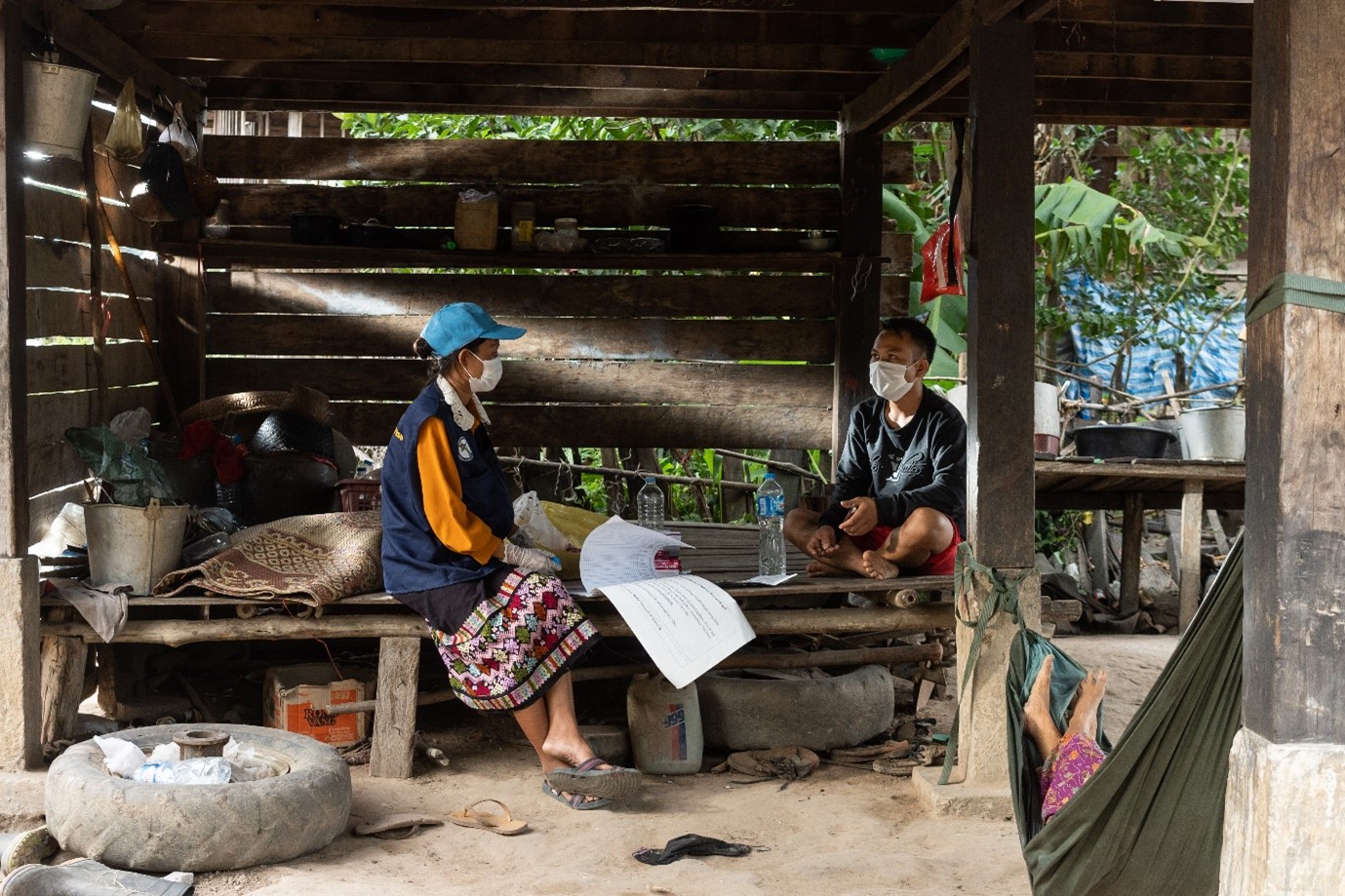Incidence of malaria in Lao People’s Democratic Republic (PDR) was estimated at 462 000 in 1997. Cases were rampant and caused loss of life, and disrupted employment and education, with significant economic impact. Since then, immense progress was made – between the years 2000 and 2010, cases were slashed by 92%. Lao PDR now aims to eliminate the deadliest malaria parasite, Plasmodium falciparum, from the country by 2024. WHO supports the national malaria programme to maintain and improve the quality of routine interventions along with deploying innovative, aggressive strategies aimed at proactive disease elimination. Impressive progress has been made with malaria now only affecting a small proportion of the population. In 2021, only 3 929 cases were reported from 10% of the country’s health facility catchments [1] – a fraction of the 46 141 cases reported in 2012. That progress has continued into 2022 with P. falciparum case numbers being 60% lower than the same time period (January to September) in 2021.
Key WHO Contributions
Harmonization of surveillance programmes for malaria reporting
Mapping of geographic areas prone to malaria
Technical advice on adaptation of malaria elimination certification processes
How did Lao PDR, with the support of the WHO Secretariat, achieve this?
WHO Lao PDR and WHO’s Mekong Malaria Elimination (MME) Programme provide technical assistance to Lao PDR’s national malaria programme. With financial support from the Global Fund, WHO technical experts have been posted at the national level and in seven districts in two high-risk provinces.
Lao PDR’s strategy has evolved over time because as the country nears elimination, the target disease is being pushed into more remote and harder to find places. While WHO continues to support the government to implement quality improvements for routine interventions to ensure rapid, early diagnosis and effective treatment at all levels of the health system; more innovative, aggressive strategies are also being deployed that focus on proactive disease elimination. ‘Accelerator’ strategies have included targeted drug administration (TDA), preventative treatment, active fever screening, and distribution of Long-Lasting Insecticidal Hammock Nets (LLIHN) by community health workers. Preventative treatments and TDA treat people with malaria who do not have symptoms, eliminating the reservoir of malaria infection and interrupting transmission.

As a voluntary malaria worker in Lao PDR, Kunmin tests members of the community for malaria and provides advice about prevention.
Photo credit: WHO.
Most recently, cadres of mobile malaria workers have been going beyond the village level and into informal cultivation settlements where preventative treatment is targeted to people who sleep overnight in forests or fields to prevent reinfection into the community. The government conducts training and sensitization for the mobile teams and community, while WHO’s many teams that are permanently based at the subnational level support ongoing activities. WHO profiles and maps high risk, difficult to reach populations to identify specific forest and field going behaviours, then tailors strategies and responses, analyzes data to monitor impact, and corrects the course of interventions when necessary.
“I want to protect the community, and I can do this by testing the people around me and explaining how they can be protected from malaria. This makes me very proud of myself. My dream is to not have any cases in the village. I will keep working until it is eliminated”
- Kunmin, Voluntary Malaria Worker, Lao PDR
Having a sensitive surveillance system is crucial for enabling rapid case detection and monitoring the efficacy of frontline anti-malaria drugs, timely outbreak response, and early interruption of the transmission cycle. Malaria reporting in Lao PDR is conducted using digital tools and a web-based information system. The WHO country office provided technical assistance to the malaria programme to integrate the malaria surveillance system into the national health information system, which uses the District Health Information System 2 (DHIS2), an open-source health management data platform [1].
WHO’s country level malaria elimination certification process provides official recognition by WHO of a country’s malaria-free status. As the government wanted to introduce subnational level certification, WHO provided technical assistance from 2021 to Lao PDR’s National and Provincial Malaria Elimination Committees. This enabled a standardized subnational “malaria free” certification process to be established which, while based on the global process, is adapted to Lao PDR’s local and subnational context. It will play a vital strategic role in monitoring and preventing disease incursion between neighboring provinces.
Due to the success of Lao PDR’s malaria elimination programme, P. falciparum malaria now affects only a very small proportion of the population of Lao PDR. The focus of Lao PDR’s elimination efforts are increasingly in finding the cases that remain in ethnic minority communities in remote, forested, hard to reach places. WHO continues to support Lao PDR’s government, alongside other partners The Global Fund, United States Agency for International Development (USAID), Bill & Melinda Gates Foundation, and United Nations Office for Project Services (UNOPS), to implement the ongoing intensive efforts that are needed to maintain gains and move towards elimination.
References

